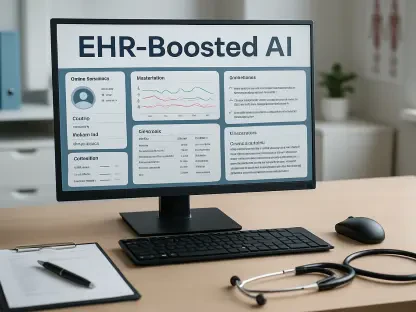In the heart of Llanelli, Wales, a quiet revolution in healthcare is brewing as Prince Philip Hospital prepares to transition its Minor Injury Unit (MIU) into an Urgent Care Treatment Centre (UCTC). This significant upgrade, announced by the Hywel Dda University Health Board on September 25, follows an extensive 12-week consultation involving local residents, hospital staff, and various stakeholders. The objective is to establish a more robust healthcare framework capable of addressing urgent but non-life-threatening medical needs with greater efficiency. By integrating existing services into a comprehensive model, this transformation promises to enhance access to quality care for the community. As Llanelli stands on the brink of this pivotal change, the implications for local healthcare delivery are profound, sparking curiosity about how this new center will reshape the town’s medical landscape and improve patient outcomes in the long term.
A New Era of Urgent Care Delivery
The chosen plan, known as Option 4a, marks a bold step forward by merging the current MIU with Same Day Emergency Care (SDEC) services into a unified UCTC. This center will operate 12 hours daily, from 8:00 AM to 8:00 PM, every day of the week, catering to a broader spectrum of conditions. Patients will be able to seek treatment for minor injuries such as sprains or cuts, minor illnesses like throat infections, and more pressing issues like severe headaches that don’t necessitate overnight hospital stays. This expanded scope aims to bridge critical gaps in the existing system, offering a viable alternative for those who might otherwise end up in overcrowded Emergency Departments (EDs) at neighboring facilities like Glangwili and Morriston Hospitals. The integration of services under one roof is expected to streamline patient care, ensuring quicker access to appropriate treatments without the delays often experienced in larger emergency settings.
Beyond the operational hours and range of treatable conditions, the UCTC represents a strategic response to the evolving needs of Llanelli’s population. By focusing on urgent care that doesn’t require extended hospitalization, the center will help decongest regional EDs, allowing those facilities to prioritize life-threatening cases. This shift is not just about expanding services but also about redefining how healthcare is delivered locally. The model prioritizes efficiency and accessibility, ensuring that residents have a dedicated space for immediate medical attention during the day. While it won’t function as a full ED, the impact of reducing unnecessary visits to distant hospitals cannot be understated. This transformation could set a precedent for how small towns balance limited resources with growing healthcare demands, potentially influencing similar initiatives across the region.
Tackling Staffing and Safety Concerns
A critical motivator behind this healthcare overhaul is the persistent challenge of staffing shortages and safety risks that have plagued the current MIU. Since November 2024, the unit has been restricted to daytime operations due to concerns raised by Healthcare Inspectorate Wales about the safety of overnight shifts amid insufficient personnel. The consultation process underscored that reverting to a 24-hour model was neither practical nor safe under the present circumstances. By introducing the UCTC framework, the Health Board aims to create a more appealing work environment for healthcare professionals. This redesign is expected to attract new talent, addressing recruitment hurdles and fostering a stable workforce capable of delivering consistent care without compromising safety standards for either patients or staff members.
Moreover, the focus on sustainability extends beyond staffing to the very structure of service delivery at Prince Philip Hospital. The new model has been crafted with long-term viability in mind, ensuring that the center can operate effectively within its defined hours while maintaining high safety protocols. This approach acknowledges the limitations of the previous setup and seeks to rectify them by prioritizing a manageable schedule that aligns with available resources. The emphasis on daytime operations reflects a pragmatic balance between community needs and operational realities. As the UCTC takes shape, the hope is that improved working conditions will not only retain existing staff but also draw in skilled practitioners, creating a virtuous cycle of enhanced care and job satisfaction that benefits the entire Llanelli area.
Community Engagement and Shared Vision
The journey to this transformative decision has been deeply rooted in community collaboration, reflecting a shared commitment to improving local healthcare. The 12-week consultation engaged a wide array of voices, from everyday residents and hospital staff to elected officials and advocacy groups like Save Our Services Prince Philip Action Network (SOSPPAN). Among the ten options considered, Option 4a emerged as the frontrunner due to its comprehensive approach and potential to alleviate pressure on regional healthcare systems. The consensus among stakeholders is clear: the existing MIU model falls short of meeting current demands safely. This new direction, supported by a planned six-month evaluation to monitor its effectiveness, demonstrates a dedication to transparency and responsiveness in addressing the town’s unique medical challenges.
This collaborative spirit also highlights a broader agreement on the necessity for an upgraded service model that prioritizes accessibility while maintaining practicality. The positive reception of Option 4a stems from its ability to expand the scope of urgent care without overextending resources. Feedback from clinicians and community representatives alike points to the potential for better patient outcomes and reduced strain on nearby EDs. The planned evaluation after six months will provide critical insights into patient experiences, medical results, and logistical aspects like transport and staffing. This ongoing dialogue ensures that the UCTC remains adaptable, capable of evolving based on real-world performance and community input. Llanelli’s proactive engagement in shaping its healthcare future serves as a model of how collective effort can drive meaningful progress.
Guiding Patients Through the Transition
As the UCTC prepares to launch, a significant emphasis is being placed on educating the public about how to navigate this new system effectively. The Health Board is developing a detailed communication strategy to inform both residents and staff about accessing the center’s services. This initiative will be supported by existing resources like the NHS Wales online symptom checker and NHS 111 Wales, which offer guidance on non-emergency concerns. For situations outside the UCTC’s scope—such as mental health crises or life-threatening emergencies—patients will continue to depend on 911 or other regional pathways. Clear direction on these care routes is essential to ensure that individuals seek treatment in the most appropriate setting, avoiding confusion during the transition period.
Equally important is the effort to promote self-help tools and triage systems that empower patients to make informed decisions about their healthcare. By highlighting alternatives like phone consultations and digital symptom assessments, the Health Board aims to direct individuals to the right level of care, whether that’s a visit to the UCTC or a call for emergency assistance. This focus on education extends to ensuring that the community understands the center’s operational limits, particularly the absence of overnight services. The goal is to build confidence in the new model while maintaining seamless access to broader support networks for needs beyond its capacity. As these communication efforts roll out, they will play a crucial role in smoothing the shift to a more integrated urgent care system in Llanelli.
Future Steps and Lasting Impact
Looking ahead, the rollout of the UCTC at Prince Philip Hospital is slated to occur within the next 6 to 12 months, contingent on successful staff recruitment and necessary infrastructure updates. While it will not serve as a full ED, the center is poised to significantly enhance the availability of urgent care locally. This development is expected to lessen the burden on nearby hospitals, improve access to same-day treatments, and possibly inspire similar reforms in other communities grappling with healthcare delivery challenges. The exclusion of overnight and specialized mental health services means that alternative pathways will remain vital, but the overall impact points toward a safer, more accessible system tailored to Llanelli’s needs.
Reflecting on the path taken, the decision to transform the MIU into a UCTC stemmed from a meticulous process of consultation and a firm commitment to safety and sustainability. The adoption of Option 4a was a testament to the community’s collective vision for better healthcare. Moving forward, the planned evaluation after six months offers a chance to refine the model further, ensuring it adapts to emerging needs. Addressing gaps like mental health provisions through continued dialogue will be key. This milestone in Llanelli’s healthcare journey underscores the value of strategic planning and community input, setting a foundation for future improvements that prioritize patient well-being and system resilience.









